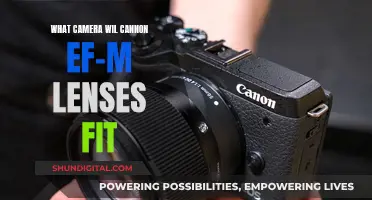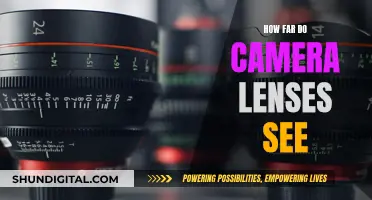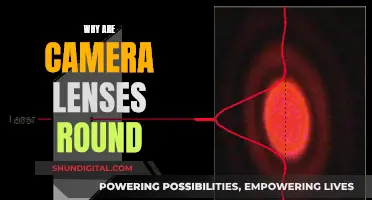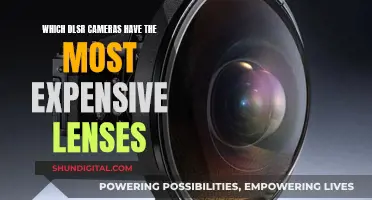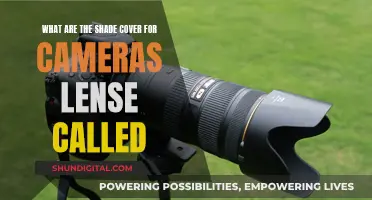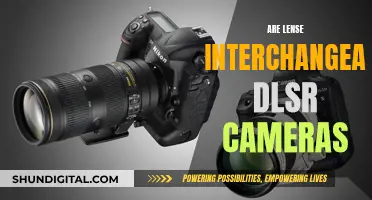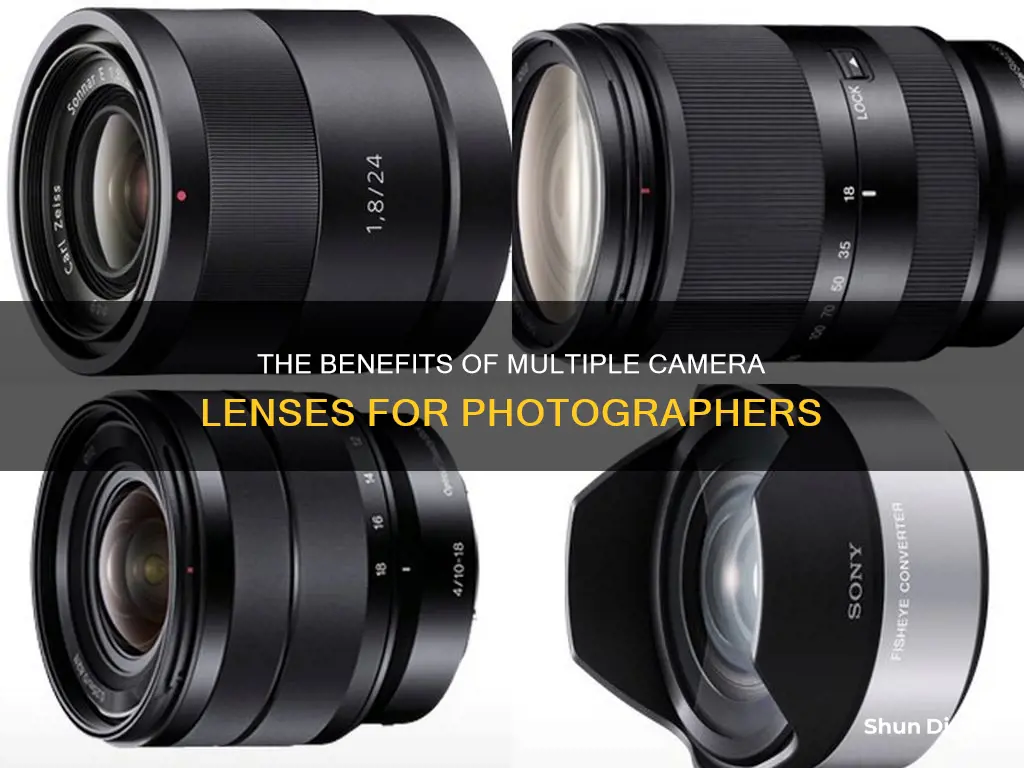
Multiple camera lenses on smartphones have become increasingly common in recent years, with dual, triple, and even quadruple camera setups now available on the market. The main advantage of having multiple lenses is the improved picture quality and functionality it offers, such as optical zoom, wide-angle shots, and depth estimation for portrait modes and bokeh effects. Each lens can provide a different type of shot, such as a wide-angle or zoomed-in view, and some lenses can even capture sharper black-and-white images. Additionally, having multiple lenses enables the device to capture stereo and light field images, enhancing augmented reality applications. While adding more lenses can create challenges in terms of processing power and image alignment, it allows smartphone manufacturers to keep their devices thin and compact while improving camera performance.
| Characteristics | Values |
|---|---|
| Number of Cameras | Dual, triple, quadruple, or more |
| Camera Combinations | Wide + telephoto, wide + monochrome, wide + ultrawide, wide + ToF, wide-angle + telephoto + ultrawide |
| Image Quality | Improved image detail, better colours, more detail with less noise, improved low-light capability |
| Zoom | Optical zoom, digital zoom, telephoto zoom, ultra-wide angle |
| Image Effects | Bokeh effect, 3D images, depth estimation, augmented reality |
| Light Sensitivity | Monochrome lenses increase light sensitivity |
| Size | Multiple cameras allow devices to remain thin |
What You'll Learn

Optical zoom functionality
Optical zoom lenses are a great option when you need to change the focal length quickly or when you don't want to carry a lot of weight. They are particularly useful for photojournalism or event photography, as they allow you to adjust the focal length to the scene in front of you without the hassle of changing lenses.
Optical zoom lenses achieve this by physically adjusting and changing the focal length through the movement of lens elements inside the camera. This mechanism allows users to magnify the image without reducing image quality. For example, if a camera has a 3x optical zoom and you're capturing a subject 30 feet away at the widest zoom, the zoom can bring the subject as close as 10 feet while still maintaining decent image quality.
The main advantage of optical zoom is that it is not dependent on resolution, meaning it does not reduce image quality as you zoom in on a distant subject. This makes it ideal for wide-area applications, including live-streaming events or video conferencing in large conference rooms.
However, there are some trade-offs to consider when using optical zoom lenses. Firstly, they typically come at a higher price due to the complex optics and mechanical components required for zoom functionality. Secondly, the mechanism necessary for optical zoom adds bulk and weight to the camera setup, making it less portable and more difficult to mount or position in certain situations. Lastly, due to the complexity of mechanical components and moving parts, there may be potential durability issues or the need for regular maintenance, so it is important to handle such cameras with care.
The Magic of Camera Filters: Enhancing Your Lens's Vision
You may want to see also

Wide-angle and ultra-wide-angle shots
Wide-angle and ultra-wide-angle lenses are a powerful addition to any camera setup. They are especially useful when you need to capture more of the subject in a photo, such as a sunset against the ocean or a city skyline. These lenses have a lower focal length than usual, allowing for a larger field of view. This means you can fit more people in a selfie or capture sweeping landscapes that include the foreground in a single image.
The focal length of a camera determines two things: how much of a scene it can capture, and how much it can magnify what you see. A camera with a short focal length captures a wider image, while a long focal length magnifies details from far away. Wide-angle lenses are any lens that has a wider field of view than the human eye, typically 35mm or wider on a full-frame camera body, or 24mm on APS-C cameras. Ultra-wide-angle lenses, on the other hand, have an even shorter focal length and provide a wider view. For a full-frame sensor, any lens shorter than 24mm is considered ultra-wide-angle.
One of the key advantages of wide-angle lenses is their ability to exaggerate perspective. They elongate features and make close objects appear larger, while distant objects become smaller in the frame. This effect is often used in advertising to make the product look larger than life. For example, in a shoe commercial, the shoe will look huge compared to the runner, who will appear smaller in the frame.
However, it's important to note that wide-angle lenses can be challenging to use effectively. They work best when you can get close to your subject and still want to capture the foreground and background. If your subject is far away, a wide-angle lens will make it look even smaller. Additionally, these lenses can create distortion in the image, especially in architecture photography, where straight lines may appear curved.
Despite these challenges, wide-angle and ultra-wide-angle lenses remain a valuable tool for photographers, especially in landscape and advertising photography, where they can create dramatic and eye-catching effects.
Choosing the Right Lenses for Your Camera
You may want to see also

Depth information
Multiple camera lenses can be used to capture a scene's depth, which is used mainly for distance-based blurring. This is also referred to as bokeh or focus effects. By combining the data from multiple lenses, your phone is able to understand how close objects are, blurring the background and bringing the foreground into focus. This is also known as depth perception.
Depth perception in a single RGB camera system can be achieved using lens aperture and object size. A mathematical model can be used to acquire object depth information by capturing the out-of-focus portion of an object from a single image. When the camera is in focus, with reference to the camera lens centre, for a fixed focal length for each aperture setting, the object distance is varied. For each aperture reading, the corresponding distance is estimated by relating the three parameters: lens aperture radius, object distance, and object size in the image plane.
Depth can be guessed from a single 2D image as well, without multiple lenses, but with multiple lenses, you get more reliable results in tough situations.
Samsung Galaxy S10: The Power of Triple Camera Lens
You may want to see also

Monochrome lenses for black and white photos
Monochrome lenses are a great addition to your camera arsenal, especially if you are interested in black and white photography. In fact, some cameras have a dedicated monochrome lens that allows you to shoot true black and white photos.
Black and white photography is an art form that uses different tones of grey, ranging from white to dark, to create compelling images. It is a challenging genre to master as it requires you to simplify an image and distill a scene to its essence without the use of colour. One of the benefits of monochrome photography is that it eliminates the distraction of colour, allowing viewers to focus on the most important parts of the image, such as shapes, textures, and composition.
When shooting in monochrome, it is important to pay attention to tonal contrast, which is the use of different tones to create a sense of depth and dimension in the image. You can also use a light source, such as an external flash, to add highlights and shadows, creating a wider range of midtones. Additionally, look for interesting lines, shapes, textures, and patterns that will stand out in the absence of colour.
Some cameras have a black and white mode that allows you to preview your image in monochrome before capturing it. This can help you visualise the final image and make any necessary adjustments to your framing or camera settings. However, it is generally recommended to shoot in colour and convert the image to black and white during post-processing, as this gives you more flexibility and allows you to adjust the "colours" even after converting to monochrome.
If you are serious about black and white photography, you may want to consider investing in a dedicated monochrome camera. These cameras offer sharper and cleaner black and white images than what you can achieve with a colour camera. Examples of monochrome cameras include the Leica M Monochrom, Pentax K-3 Mark III Monochrome, and the Leica Q2 Monochrom.
In conclusion, monochrome lenses for black and white photos can add a unique and artistic touch to your photography. By removing the distraction of colour, you can create dramatic, emotive, and nostalgic images that emphasise shapes, textures, and tonal contrast. With the right techniques and equipment, you can take your monochrome photography to the next level.
UV Light: Friend or Foe to Camera Lenses?
You may want to see also

Time-of-Flight cameras for depth sensing
Time-of-Flight (ToF) cameras are a type of range imaging camera system that measures the distance between the camera and the subject for each point in the image. This is done by measuring the time it takes for a light signal, usually from a laser or LED, to travel from the camera to the subject and back. This is known as the round-trip time or time-of-flight.
ToF cameras have several advantages over other camera systems:
- They are very compact, with the illumination unit placed right next to the lens.
- They do not require any mechanical moving parts.
- They can compose a 3D image of a scene with just one shot, whereas other 3D vision systems require more images and movement.
- They use a small amount of processing power because distance information can be directly extracted from the output signals.
- They are able to measure the distances within a complete scene with a single shot and can reach up to 160 frames per second, making them ideal for real-time applications.
- They are relatively cheap compared to other 3D-depth range scanning technologies.
ToF cameras have a wide range of applications, including:
- Object scanning and tracking
- Measuring distance and volume
- Indoor navigation
- Gesture recognition
- 3D imaging and augmented reality
- Background blurring in portrait mode
- Low-light photography
- Collision avoidance in drones and autonomous vehicles
- Surveillance and security
- Robotics and automation
- Medical applications such as human-computer interaction
Understanding Camera Lenses: A Beginner's Guide to Photography
You may want to see also
Frequently asked questions
Multiple camera lenses improve picture quality and offer optical zoom functionality.
Each lens has a different focal length, which can give you either a wide shot or a zoomed-in shot.
Some additional lenses can shoot in black and white for increased light sensitivity, while others offer depth information.
Smartphone manufacturers want to keep their devices thin, so they've opted to add more cameras with different fixed focal lengths.
Focal length refers to the distance between the centre of the lens and where light converges on the sensor. Lenses with short focal lengths capture more of a scene and are said to have a wide angle of view. Lenses with longer focal lengths have a narrower angle of view and produce a more magnified or zoomed-in image.


